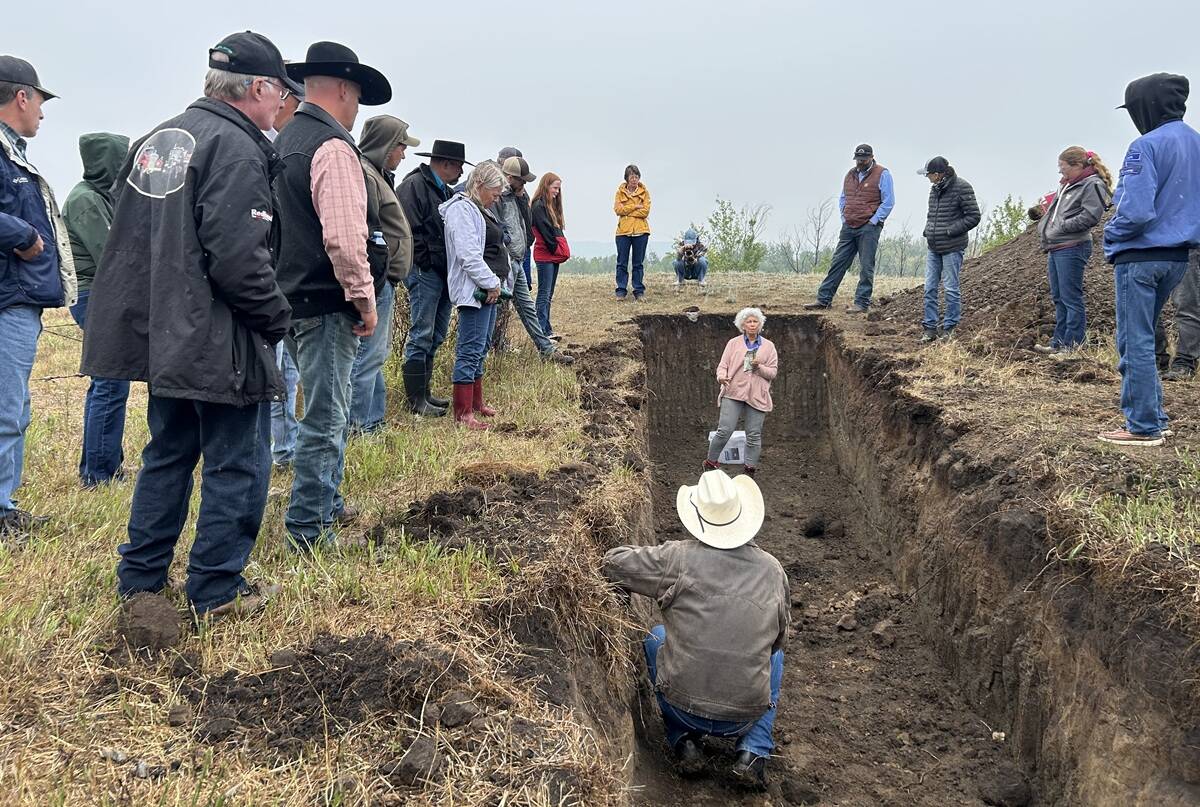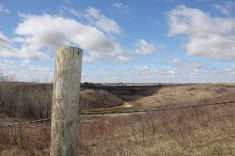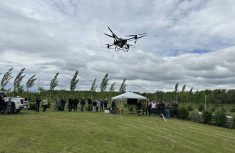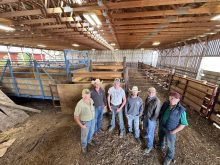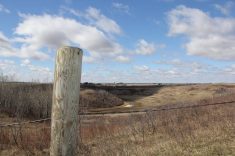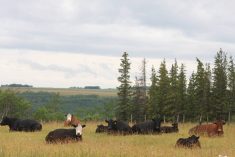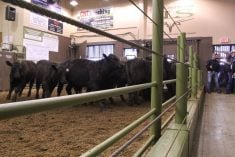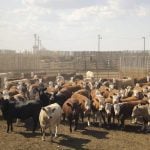Back in early August, I drove to Sheila Phillips and Dave Crittall’s farm near Paradise Hill, Sask., for a field day organized by the Alberta-Saskatchewan Grazing Club. I doubt anyone really wants to host a field day in the middle of a drought, which was our situation at that time (since then it’s rained a fair bit). But they went ahead with it, and it was a good example of what a difference management can make.
We started the day in the shop, and Phillips gave us a bit of background on the farm, and how they started experimenting with different soil health practices. Then Yamily Zavala, who heads the Chinook Applied Research Association’s Soil Health Lab near Oyen, Alta., led us through an in-depth presentation on soil health, complete with hands-on demos and experiments looking at everything from wet aggregate stability (how well the soil holds together when it’s soaked) to effective rainfall. One sign of a “sick” soil is clumps with sharp edges, she told us, as those edges indicate little to no biological activity. Another bad sign is a crust on the soil.
Zavala has adapted Cornell University’s Comprehensive Assessment of Soil Health to measure soil health. It breaks soil health into three areas — biological, physical and chemical traits. Biological characteristics include things such as soil organic matter and the living organisms in the soil that break things down. Physical characteristics include everything from wet aggregate stability to compaction to soil texture. Chemical characteristics include, of course, minerals and fertility. Zavala sees the soil as a system, where everything needs to work together.
Read Also
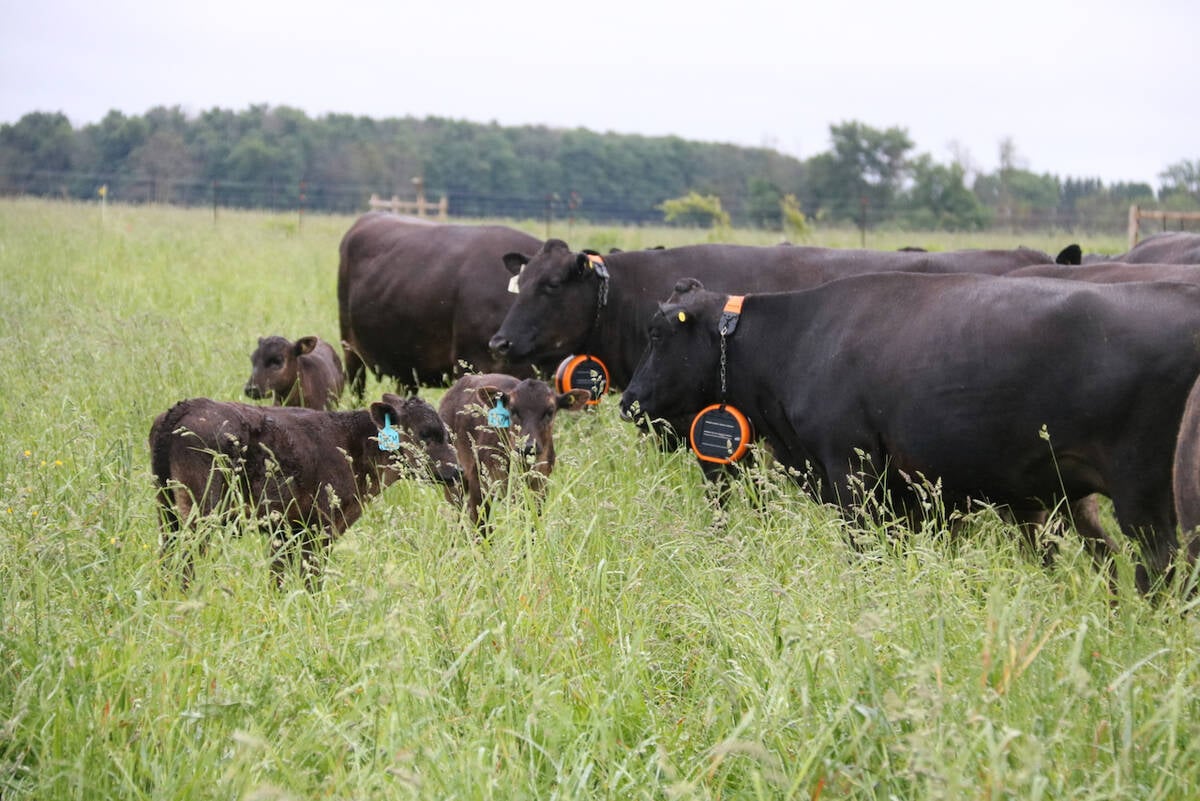
Connecting marbling scores in Japanese and Canadian grading systems
Research into whether Canadian marbling scores can predict Japanese marbling scores
When you consider all three of those spheres, there is a lot going on in the soil. Zavala acknowledged that there are a lot of numbers on the soil reports the lab provides. But they’re also colour-coded, with red results being the worst, and blue the best, she said. Look for the constraints (red) and focus on improving those.
“I always say no chemical constraint is resolved if there is no improvement in the other soil constraints,” she said. For example, focusing on the physical constraints first might improve the soil biology — she compared it to building a better house for the soil microbes. Then it might make sense to fix the chemical constraints.
Please do not take this to mean that I am suggesting everyone should stop applying fertilizer. Readers would need a lot more information than I can cover in this column before making specific decisions about fields they manage. However, Zavala’s point about focusing on constraints applies not only to soil health, but other management decisions.
After all, there is no end of things that could be improved on any farm or ranch (or any business, or house, or almost anything else in life, for that matter). But we all have limited time, and most of us have limited resources. So which ones should we tackle?
Well, if your roof is leaking, there’s not much point in renovating your kitchen until you fix the roof. To do otherwise is a waste of time and money. Perhaps you don’t have anything as dramatic as a “leaky roof” on your operation right now, but my point is that sometimes we focus on improving the things we’re already good at, rather than the things that affect the whole structure.
Zavala recommends getting a benchmark on your field and then monitoring the field as you adapt your management practices. She also recommends producers “fix those constraints that will unlock other constraints to start healing the soil.”
Are there constraints in your operation that, if removed, would ease other constraints? What are the constraints blocking you from tackling other problems?
Of course, on the forage production side, sometimes rainfall is the biggest constraint. Unless you have access to irrigated crops, the question might be whether you can do anything to improve the soil so that it makes better use of the moisture it receives.
While some physical soil characteristics are permanent, we observed some interesting management effects at the grazing club field day. For example, Crittall had peeled back a fence, then dug a soil pit that straddled the fence line, so we could see if there were differences between the two fields. On one side of the fence was a horse pasture, and the other side a field where they’d been bale grazing for a long time. The dark band at the top was much thicker on the bale grazing side, which goes to show you can improve organic matter with steady management.
Of course, managing a ranch or farm means more than managing soil health or forage production. The staff at Canfax Research Services provided an article in this issue that focuses on profitability in cow-calf operations. These days, the top third of the farms and ranches that they benchmarked for profitability don’t have vast differences in revenue from the rest — high cattle prices are benefiting all cow-calf operations. But the most profitable farms are better at controlling costs right now, including cash, depreciation and opportunity costs. They are focused on continuous improvements and setting themselves up for the next phase of the cattle cycle.
Ultimately, sometimes the first constraint to unlock might not be in the soil or the farm finances. Phillips alluded to this early in the day, as she quoted rancher and former Canadian Cattlemen columnist Don Campbell:
“If you want to make a big change, change the way you see something.”
For more on the Chinook Applied Research Association’s Soil Health Lab, visit carasoilhealthlab.ca.


